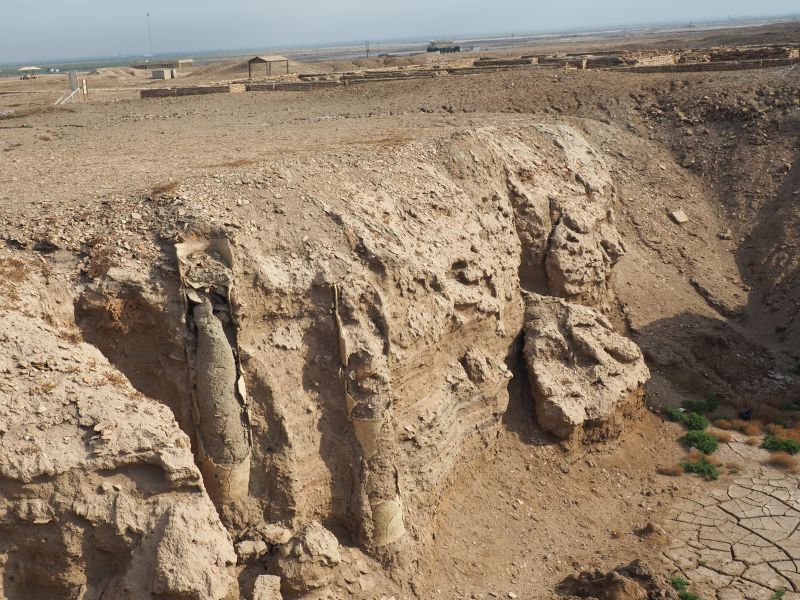During his excavations, Woolley was trying to locate the earliest or most archaic occupation levels at Ur, as well as evidence of the so-called Biblical Flood that allegedly occurred between the Ubaid and Uruk periods. He dug a number of pits near and around the First Dynasty royal graves located northwest of the gravesite on a parallel line west of the Ehursag. The Excavated area measured 25 meters by 16 meters and reached a depth of 19 meters.
Woolley initially found numerous ring-drains of terracotta construction that measured 5 to 10 meters in length. He noted that there were holes throughout the exterior structure of the drains, and the space separating the drain from the soil surrounding it was packed with broken pottery, which he surmised aided in free-flowing drainage. After Digging deeper, eight distinct occupation levels were identified, and evidence of houses made of packed earth, mud and baked brick were uncovered, as well as some with stone floors.
The uppermost levels were dated to the Early Dynastic periods, with some remains from the Third Dynasty of Ur, with the majority from the First Dynasty. Below these were occupation levels dating to the Uruk and Jemdat Nasr periods, as well as evidence of a pottery manufacturing level. Woolley found a water-laid silt layer averaging 3.5 meters thick that confirmed his flood theory, but he determined it was not the flood of Biblical narratives, but rather a local flooding event. Below the flood layer he located the earliest Ubaid habitation, including graves, stone tools and clay humanoid figurines with snake-like heads.
